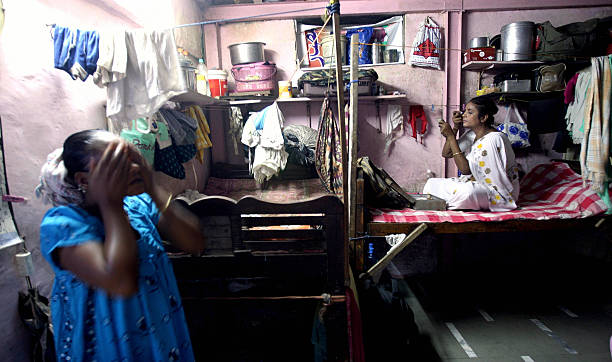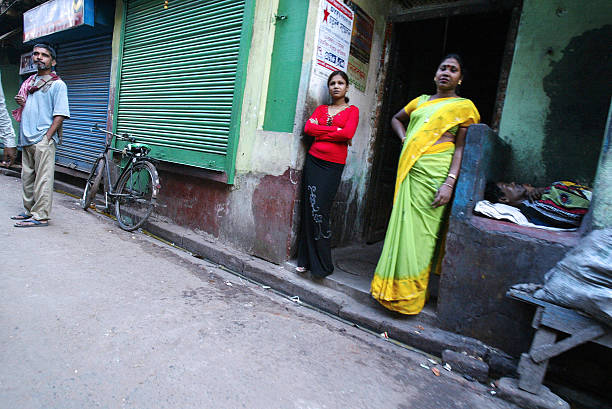

Top 10 Allahabad Red Light Areas
Katra Medniganj Red Light Area
Katra Medniganj is one of the oldest Red Light Areas in Allahabad. It is located near the iconic Allahabad Fort and the Yamuna River. Despite the challenges faced by its residents, this area has a rich cultural history that dates back centuries.
Katra Medniganj, also known as Katra Bazaar, is not just known for its red-light district; it has a vibrant market that attracts tourists and locals alike. However, it is essential to acknowledge the issues faced by the community residing in this area. The government and NGOs have been actively working to address the challenges and provide support to those affected.
Also read, Top 10+ Red Light Areas in Visakhapatnam| Visakhapatnam Red Light Areas
Shivkuti Red Light Area
Located in the Shivkuti region of Allahabad, this red-light area is another significant part of the city. Understanding the realities of this locality is crucial to creating awareness and fostering positive change.
Shivkuti red light area is a densely populated neighborhood that faces numerous social and economic challenges. It is essential to understand the living conditions of the community and the efforts made by NGOs to improve the situation. Providing education and vocational training to the residents is a step towards empowering them and breaking the cycle of poverty.
Atala Red Light Area
Atala is one of the prominent Red Light Areas in Allahabad and often makes headlines for various reasons. Understanding the dynamics of this area is vital to address the issues faced by its residents.
Atala is one of the most talked-about Red Light Areas in Allahabad, often attracting media attention. However, it is essential to approach the topic sensitively and avoid sensationalism. Behind the headlines, there are real people with real challenges, and addressing those challenges should be the focus.
Naini Red Light Area
Naini, a prominent locality in Allahabad, is also home to a red light area. Understanding the complexities of this area is crucial to tackling social issues effectively.
Naini is known for its industrial significance and is an essential part of Allahabad’s economy. However, it is also home to a red light area that requires attention and support. The community outreach programs in Naini play a vital role in providing resources and assistance to those in need.
Kareli Red Light Area
Kareli, a bustling part of Allahabad, is another area that faces the challenge of a red-light district. Understanding the complexities of this area is essential for effective intervention.
Kareli is a culturally diverse neighborhood with a mix of residential and commercial establishments. The presence of a red light area poses unique challenges, and rehabilitation efforts must be undertaken with sensitivity and care.

Bairhana Red Light Area
Bairhana, situated in the heart of Allahabad, is an area where the struggle to combat social issues is ongoing. Understanding the issues faced here is crucial for devising appropriate solutions.
Bairhana’s red light area has a significant impact on the local economy, attracting a transient population. Government initiatives focused on skill development and vocational training can provide avenues for better livelihoods.
Mumfordganj Red Light Area
Mumfordganj, a neighborhood with historical significance, is also known for its red-light area. Understanding the historical context and challenges faced by the community is essential.
Mumfordganj’s red light area coexists with its historical importance, adding to the complexity of the area. The community living here often faces social stigma, making it imperative to foster an inclusive and understanding society.
Naini Bridge Red Light Area
Naini Bridge, a crucial location in Allahabad, is home to a red light area. Understanding the social dynamics in this area is vital for addressing the issues effectively.
The presence of a red light area near the Naini Bridge presents unique challenges. Creating awareness about the socio-economic factors and providing support to those in need can lead to positive change.
Baba Ka Purva Red Light Area
Baba Ka Purva, located in Allahabad, is another area where the struggle to combat social issues is ongoing. Understanding the community’s needs is vital to implement effective solutions.
Empowering the residents of Baba Ka Purva through education and skill development is essential for breaking the cycle of poverty and creating a better future. NGOs and community-driven initiatives play a crucial role in making this possible.
Georgetown Red Light Area
Georgetown, a bustling locality in Allahabad, also faces the challenge of a red-light area. Understanding the complexities of this area is crucial for devising effective solutions.
It is vital to approach the rehabilitation of the residents with sensitivity and provide them with opportunities for alternative livelihoods.
FAQs (Frequently Asked Questions)
What are the main challenges faced by red-light areas in Allahabad?
Red Light Areas in Allahabad face issues like poverty, social stigma, lack of access to education, and vulnerability to exploitation.
Are there any government initiatives addressing these challenges?
Yes, the government has implemented various initiatives to address the challenges faced by the red light areas, including skill development programs and community outreach.
How do NGOs contribute to the welfare of these communities?
NGOs play a significant role in providing support and resources to the residents of red-light areas, focusing on education, healthcare, and vocational training.
What steps can society take to support the residents of these areas?
– Society can contribute by promoting understanding and empathy, supporting NGOs, and encouraging rehabilitation efforts.
Is it possible to uplift the living conditions of the residents in these areas?
Yes, with collective efforts, awareness, and appropriate support, it is possible to uplift the living conditions and provide a better future for the residents.
How can awareness about these issues be spread effectively?
Awareness can be spread through media campaigns, community engagement, and educational programs that highlight the challenges faced by these communities.
Conclusion
The existence of Red Light Areas in Allahabad poses various challenges for both the residents and the society at large. Understanding the complexities and addressing the issues with empathy and sensitivity can pave the way for positive change. By supporting government initiatives and NGOs, we can contribute to the welfare of the communities living in these areas. Creating awareness and promoting inclusivity are essential steps towards building a more compassionate and understanding society.
